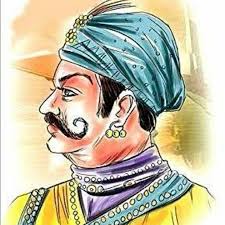Prithviraj Chauhan or Rai Pithora was a ruler from the Chahamana (Chauhan) administration. He governed Sapadalaksha, the customary Chahamana region, in present-day north-western India. He controlled a significant part of the present-day Rajasthan, Haryana, and Delhi; and a few pieces of Punjab, Madhya Pradesh, and Uttar Pradesh. His capital was situated at Ajayameru (current Ajmer), even though the medieval society legends depict him as the lord of India’s political focus Delhi to depict him as a delegate of the pre-Islamic Indian force.
Prithviraj accomplished military triumphs against a few neighboring Hindu realms, most strikingly against the Chandela lord Paramardi. He likewise repelled the early intrusions by Muhammad of Ghor, a leader of the Muslim Ghurid tradition. In any case, in 1192 CE, the Ghurids vanquished Prithviraj at the Second clash of Tarain and executed him soon after. His annihilation at Tarain is viewed as a milestone occasion in the Islamic success of India and has been depicted in a few semi-unbelievable records. The most well known of these records is Prithviraj Raso, which presents him as a “Rajput”, although the Rajput character didn’t exist during his time.
Prithviraj was born to the Chahamana ruler Someshvara and sovereign Karpuradevi (a Kalachuri princess). Both Prithviraj and his more youthful sibling Hariraja were conceived in Gujarat, where their dad Someshvara was raised at the Chaulukya court by his maternal relatives. According to Prithviraj Vijaya, Prithviraj was conceived on the twelfth day of the Jyeshtha month. The content doesn’t refer to the time of his introduction to the world, yet gives a portion of the mysterious planetary situations at the hour of his introduction to the world, calling them promising. In light of these positions and expecting certain other planetary positions, Dasharatha Sharma determined the time of Prithviraj’s introduction to the world as 1166 CE (1223 VS).
The medieval life stories of Prithviraj propose that he was taught well. The Prithviraj Vijaya states that he aced 6 dialects; the Prithviraj Raso claims that he learned 14 dialects, which seems, by all accounts, to be an embellishment. The Raso proceeds to guarantee that he turned out to be knowledgeable in various subjects, including history, arithmetic, medication, military, painting, reasoning (Mimamsa), and religious philosophy. Both writings express that he was especially capable of arrow based weaponry.
Conclusion
Most medieval sources express that Prithviraj was taken to the Chahamana capital Ajmer, where Muhammad intended to restore him as a Ghurid vassal. At some point later, Prithviraj opposed Muhammad and was murdered for treason. This is verified by numismatic proof: some ‘horse-and-Bullman’- style coins bearing names of both Prithviraj and “Muhammad container Sam” were given from the Delhi mint, albeit another chance is that the Ghurids at first utilized Chahamana-style coinage to guarantee more noteworthy acknowledgment of their coinage in the previous Chahamana territory. After Prithviraj’s passing, Muhammad introduced the Chahamana sovereign Govindaraja on the seat of Ajmer, which further backings this theory.
According to a Persian Historian of the 13th century, Minhaj-I-Siraj states that Prithviraj was “sent to damnation” after being caught.

